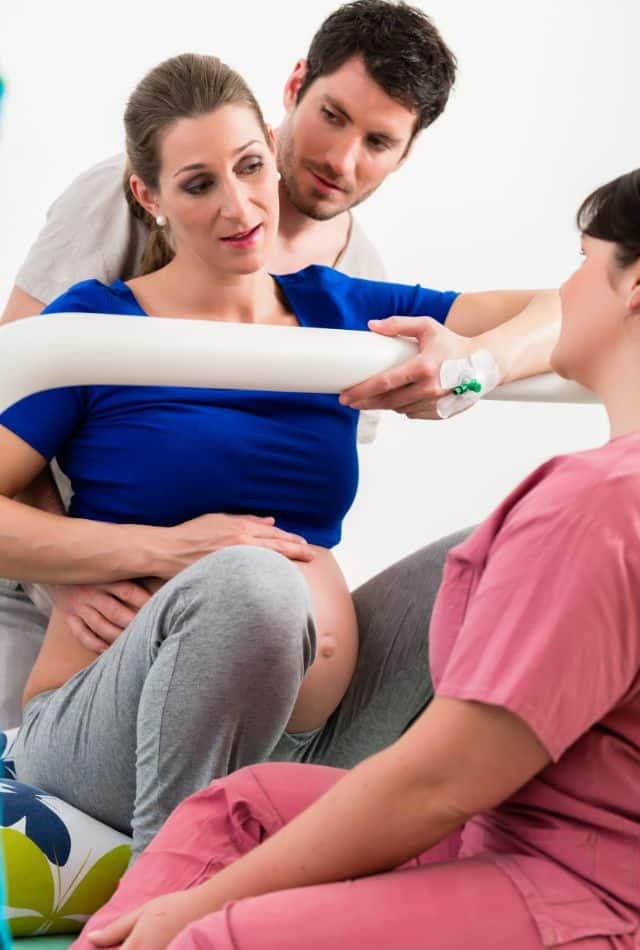Who is in the Delivery Room
A delivery room is a well-oiled machine with a careful choreography of events.
As a health practitioner working there, you see numerous and diverse participants who all serve specific roles in the birthing process.
Delivery is a long, exhausting process. It can be overwhelming to try and keep track of everything happening, but it helps if you know what to expect in that room as you help bring life forth.
Here, then, is a list of 7 healthcare practitioners that you will be working with inside the delivery room.

1. The Nurse or Midwife
This professional is supposed to be on hand throughout the entire labor experience and will ensure that everything goes according to the patient’s wishes and plan.
Nurses and midwives are trained to handle many situations that may arise during labor and delivery. Midwives can independently manage deliveries without complications, while nurses may assist an OB/GYN or midwife and will involve a doctor if a situation is beyond their scope of practice.
Some nurses may even be certified in certain techniques that allow them to lend a helping hand in speeding up the labor process, such as the use of nipple stimulation during early contractions.
2. The OB/GYN
Although many doctors are working during labor and delivery, the doctor who will be responsible for the mother’s care is the obstetrician/gynecologist (OB/GYN).
This healthcare professional is a licensed physician specializing in obstetrics and gynecology, with a focus on pregnancy, childbirth, postpartum care, and women’s reproductive health.
He or she will have spent many years of schooling learning how to deliver babies and provide expert postpartum care to new mothers.
The OB/GYN will also oversee all of the other medical professionals in attendance to ensure that everything runs smoothly.
3. The Obstetrician
This specialist is often the main point of contact throughout pregnancy and labor, focusing on managing the health of the mother and fetus. Typically, they will give medical advice and counsel on everything from nutrition to exercise.
They will also oversee laboratory tests and ultrasounds. During labor, their instructions will be extremely useful as they oversee the medical aspects of delivery.
If a complication arises during labor, they will determine whether an emergency cesarean section is necessary.
4. Anesthesiologist
Anesthesiologists is responsible for administering anesthesia and managing pain during labor and delivery, particularly for cesarean sections and when epidural analgesia is requested
They prepare patients for surgery by performing a physical examination, creating a treatment plan, administering medications and monitoring the patient’s condition throughout the procedure.
This may involve inserting catheters, tubes or other medical devices into patients’ bodies so that they can receive oxygen or pain medication.
Anesthesiologists also monitor and regulate the amount of anesthesia given to patients, which may be regulated through computer-assisted machines.
An anesthesiologist’s primary role is to ensure patient’s safety during surgical and other medical procedures. If the birth is a cesarean, an anesthesiologist will be needed in the delivery room.
5. Pediatrician
A pediatrician or neonatologist is often present during delivery to assess and care for the newborn immediately after birth.
6. Perinatologist
Also known as maternal-fetal medicine specialists, perinatologists focus on high-risk pregnancies. They may not be routinely present in all deliveries but are essential for managing complications and high-risk situations.
Perinatologists provide care to women and their families on a variety of issues, including high-risk pregnancy, prenatal diagnosis, fetal therapy, management of labor, delivery, and postnatal care of mother and infant.
7. Doula
There is a lot of talk in the birth community about what role doulas should play, whether they are necessary and how much they cost.
There are many types of doulas, including Birth Doulas, Labor Doulas, Postpartum Doulas and Childbirth Educators.
Doulas provide non-medical support and advocacy for the birthing person and their family during labor, focusing on emotional, informational, and physical support.
Their focus is on supporting the laboring mother and her partner.
They provide emotional support and physical comfort measures such as massage and counter-pressure, help with breathing techniques, suggest positions for labor, and keep track of medical details for the birthing mother.
Final Thoughts
Now that you know what to expect once you enter the delivery room, you should not be confused or overwhelmed.
All the professionals above work together to make delivery a success.
See Also